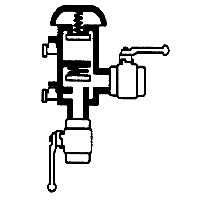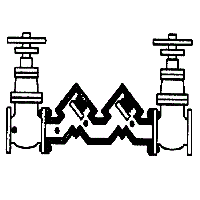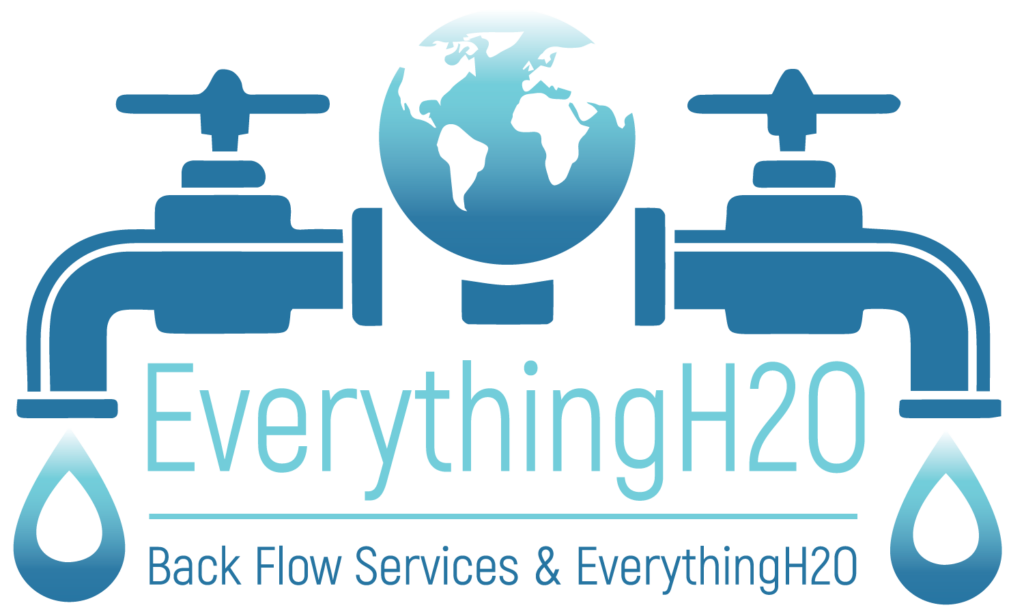Backpressure backflow is backflow caused by a downstream pressure that is greater than the upstream or supply pressure in a public water system or consumer’s potable water system. Backpressure (i.e., downstream pressure that is greater than the potable water supply pressure) can result from an increase in downstream pressure, a reduction in the potable water supply pressure, or a combination of both. Increases in downstream pressure can be created by pumps, temperature increases in boilers, etc. Reductions in potable water supply pressure occur whenever the amount of water being used exceeds the amount of water being supplied, such as during water line flushing, fire fighting, or breaks in water mains.
QUESTION: What is backsiphonage?
ANSWER:
Backsiphonage is backflow caused by a negative pressure (i.e., a vacuum ~ or partial vacuum) in a public water system or consumer’s potable water system. The effect is similar to drinking water through a straw. Backsiphonage can occur when there is a stoppage of water supply due to nearby fire fighting, a break in a water main, etc.
QUESTION: Why do water suppliers need to control cross-connections and protect their public water systems against backflow?
ANSWER:
Backflow into a public water system can pollute or contaminate the water in that system (i.e., backflow into a public water system can make the water in that system unusable or unsafe to drink), and each water supplier has a responsibility to provide water that is usable and safe to drink under all foreseeable circumstances. Furthermore, consumers generally have absolute faith that water delivered to them through a public water system is always safe to drink. For these reasons, each water supplier must take reasonable precautions to protect its public water system against backflow.
QUESTION: What should water suppliers do to control cross-connections and protect their public water systems against backflow?
ANSWER:
Water suppliers usually do not have the authority or capability to repeatedly inspect every consumers’ premises for cross-connections and backflow protection. Alteratively, each water supplier should ensure that a proper backflow preventer is installed and maintained at the water service connection to each system or premise that poses a significant hazard to the public water system. Generally, this would include the water service connection to each dedicated fire protection system or irrigation piping system and the water service connection to each of the following types of premises: (1) premises with an auxiliary or reclaimed water system: (2) industrial, medical, laboratory, marine or other facilities where objectionable substances are handled in a way that could cause pollution or contamination of the public water system; (3) premises exempt from the State Plumbing Code and premises where an internal backflow preventer required under the State Plumbing Code is not properly installed or maintained; (4) classified or restricted facilities; and (5) tall buildings. Each water supplier should also ensure that a proper backflow preventer is installed and maintained at each water loading station owned or operated by the water supplier.
QUESTION: What is a backflow preventer?
ANSWER:
A backflow preventer is a means or mechanism to prevent backflow. The basicmeans of preventing backflow is an air gap, which either eliminates a cross-connection or provides a barrier to backflow. The basic mechanism for preventing backflow is a mechanical backflow preventer, which provides a physical barrier to backflow. The principal types of mechanical backflow preventer are the reduced-pressure principle assembly, the pressure vacuum breaker assembly, and the double check valve assembly. A secondary type of mechanical backflow preventer is the residential dual check valve.
QUESTION: What is an air gap?
ANSWER:
An air gap is a vertical, physical separation between the end of a water supply outlet and the flood-level rim of a receiving vessel. This separation must be at least twice the diameter of the water supply outlet and never less than one inch. An air gap is considered the maximum protection available against backpressure backflow or backsiphonage but is not always practical and can easily be bypassed.

QUESTION: What is a reduced principle assembly (RP)?
ANSWER:
An RP is a mechanical backflow preventer that consists of two independently acting, spring-loaded check valves with a hydraulically operating, mechanically independent, spring-loaded pressure differential relief valve between the check valves and below the first check valve. It includes shutoff valves at each end of the assembly and is equipped with test cocks. An RP is effective against backpressure backflow and backsiphonage and may be used to isolate health or nonhealth hazards.

QUESTION: What is a pressure vacuum breaker assembly (PVB)?
ANSWER:
A PVB is a mechanical backflow preventer that consists of an independently acting, spring-loaded check valve and an independently acting, spring-loaded, air inlet valve on the discharge side of the check valve. It includes shutoff valves at each end of the assembly and is eqipped with test cocks. A PVB may be used to isolate health or nonhealth hazards but is effective against backsiphonage only.

QUESTION: What is a double check valve assembly (DC)?
ANSWER:
A DC is a mechanical backflow preventer that consists of two independently acting, spring-loaded check valves. It includes shutoff valves at each end of the assembly and is equipped with test cocks. A DC is effective against backpressure backflow and backsiphonage but should only be used to isolate nonhealth hazards.

QUESTION: What is a residential dual check valve (RDC)?
ANSWER:
A RDC is similar to a DC in that it is a mechanical backflow preventer consisting of two independently acting, spring-loaded check valves. However, it usually does not include shutoff valves, may or may not be equipped with test cocks or ports, and is generally less reliable than a DC. A RDC is effective against backpressure backflow and backsiphonage but should only be used to isolate nonhealth hazards and is intended for use only in water service connections to single-family homes.
QUESTION: Why do backflow preventers have to be tested periodically?
ANSWER:
Mechanical backflow preventers have internal seals, springs, and moving parts that are subject to fouling, wear, or fatigue. Also, mechanical backflow preventers and air gaps can be bypassed. Therefore, all backflow preventers have to be tested periodically to ensure that they are functioning properly. A visual check of air gaps is sufficient, but mechanical backflow preventers have to be tested with properly calibrated gauge equipment.
QUESTION: Where can I get more information about cross-connection control?
ANSWER:
One excellent reference manual is the third (2004) edition of the American Water Works Association’s (AWWA’s) Manual M14, Recommended Practice for Backflow Prevention and Cross-Connection Control, which is available from the AWWA Bookstore; 6666 West Quincy Avenue; Denver, Colorado 80235; 800/926-7337; http://www.awwa.org. Another excellent reference manual is the ninth (1993) edition of the University of Southern California’sManual of Cross-Connection Control, which is available from the Foundation for Cross- Connection Control and Hydraulic Research; University of Southern California; KAP-200 University Park MC-2531; Los Angeles, California 90089-2531; 213/740-2032;
http://www.usc.edu/dept/fccchr.
Have More Questions?
CONTACT US
- 689-710-8882
- info@everything-h2o.com
- 581 North Park Ave #702, Apopka, FL 32704
